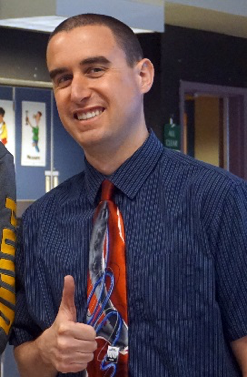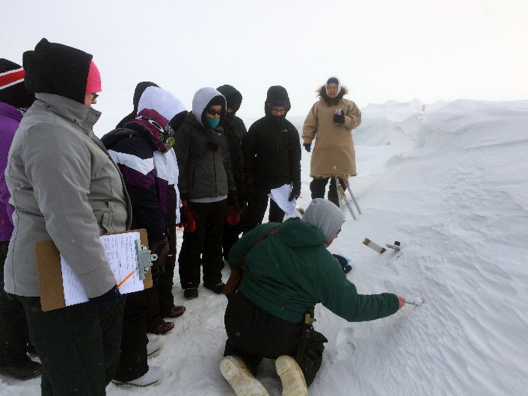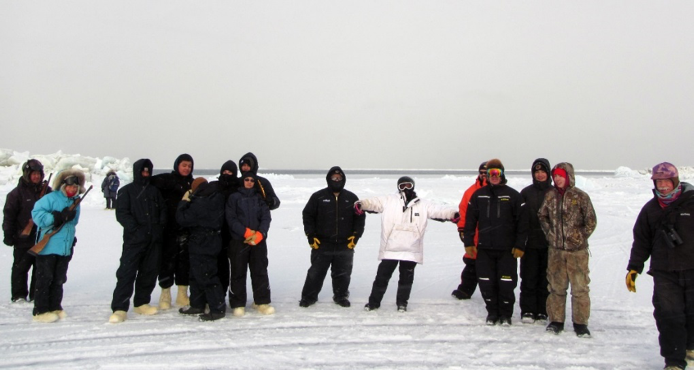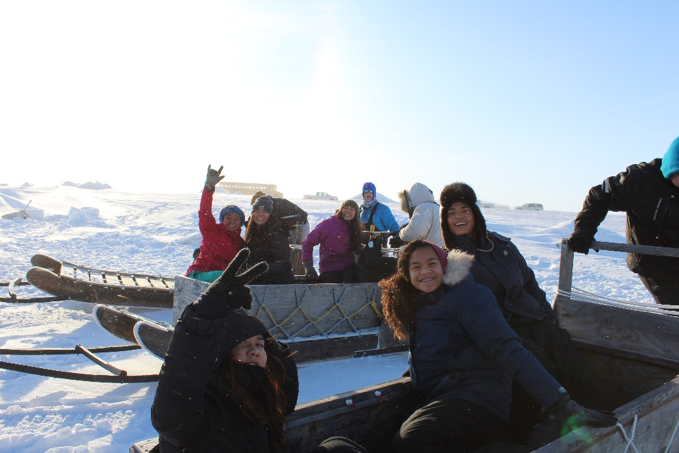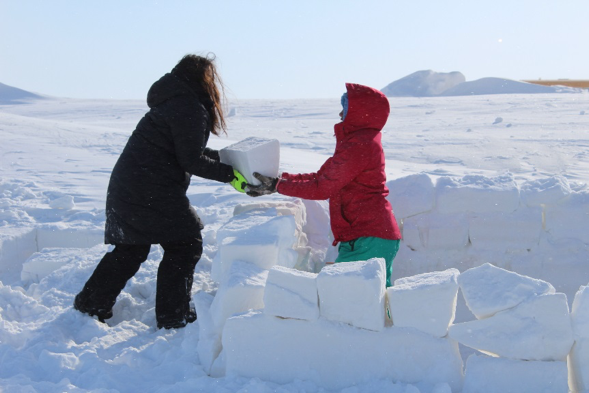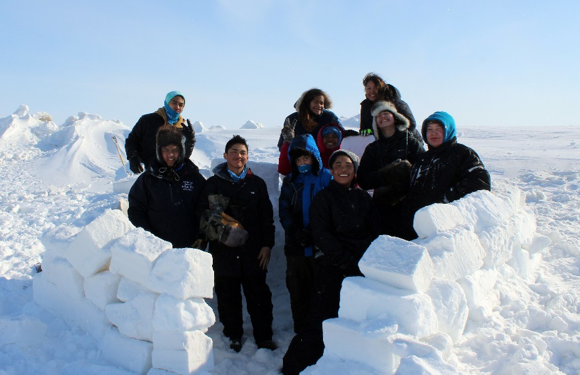Overview
Since 2015, teachers at Eben Hopson Middle School in Utqiaġvik (formerly Barrow), Alaska have collaborated with scientists and local Iñupiaq hunters and sea ice experts to bring more relevant and accessible lessons into 8th grade science classrooms through the development of a sea ice-focused curriculum.
The community of Utqiaġvik is located at the northernmost point of the United States on the shores of the Arctic Ocean. For eight months of the year, sea ice is the dominant feature of the local environment and one that impacts every aspect of the traditional Iñupiaq subsistence way of life. Intimate knowledge of the timing, condition, stability, and safety of the ice is crucial to the livelihood of the Iñupiaq community and thus is valued information passed down through the generations. Utqiaġvik has for decades also been the focus of and a logistical base for Arctic researchers. The long history of academic research in the region and the far longer and richer body of Iñupiaq traditional knowledge of the local environment together create an extraordinary opportunity for engaging students through lessons and examples that teach core science goals while enriching students’ knowledge of and appreciation for the culture and environment in which they live.
The 8th grade sea ice curriculum culminates in a field trip onto the sea ice to observe, measure, sample, and learn about the ice environment from local Iñupiaq experts and researchers. During the field trip, students take part in traditional hunting activities including breaking trail, safely navigating over sea ice, building shelters with ice blocks, and visiting the open water at the ice edge. They learn about key subsistence animals and listen to whales and seals calling under the ice through a hydrophone. Classroom lessons are brought to life in the field. For example, by measuring snow density as it applies to the importance of selecting good snow slabs for a shelter or measuring the temperature along an ice core to determine the most likely place in the ice to find microscopic plants and animals that are so important to the marine food web.
Applying classroom lessons to real life situations is the goal of the field trip. However, over and over students have expressed their appreciation for the opportunity to simply be on the ice, some for the very first time, allowing them to become more familiar with and comfortable on the ice in their ‘backyard’.
Community Partners - Iñupiaq sea ice experts and field guides
Billy Adams and Craig George, NSB Department of Wildlife Management, Utqiaġvik, AK
On-ice field trip support:
Qaiyaan Harcharek, NSB-DWM
Brian Person, NSB-DWM
Mike Pederson, NSB-DWM
Dave Ramey, NSB-DWM
Bobby Sarren, NSB-DWM
Todd Sformo, NSB-DWM
Leandra de Sousa, NSB-DWM
Raphaela Stimmelmayr, NSB-DWM
Andrew Von Duyke, NSB-DWM
Kaare Erickson, UIC Science
Nagruk Harcharek, UIC Science
Richard Glenn, Arctic Slope Regional Corporation
Project status and milestones:
Two district approved science curriculum units:
Title: Sea Ice Structure
Description: This unit ties in molecular structures, thermal energy, and sea ice in order for students to gain a deep understanding of, and to be able to identify, the different types of sea ice. Students study the molecular structure of water. They then apply that knowledge to what happens to water molecules when you remove thermal energy and create ice. After they have a handle on the structure of fresh water ice, students apply that knowledge to how sea ice is formed at the molecular level under ideal conditions. Last, students then learn to identify the most common features and types of sea ice present around the coastal North Slope areas.
Title: Asking Questions About Climate Change
Description: This unit teaches students how to ask questions and research the topic of global climate change. Information, sources, and scientific data are changing each month and so the goal of this unit is to get students doing their own research and asking their own questions. While doing research, some instructional time should be spent on how to find a quality website for factual information, on how to identify or question misinformation, and how to search for sources that are at a level of understanding suitable for the individual student. Last, students will need to be guided to local examples, local sources, and local knowledge on the subjects of the cause of global climate change and potential local impacts.
Project Location
Project Products
Dates
-Location
Utqiaġvik, AlaskaMembers
Lead Scientist
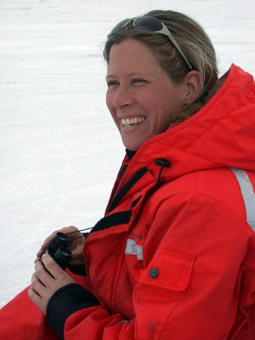
Lead Educator
